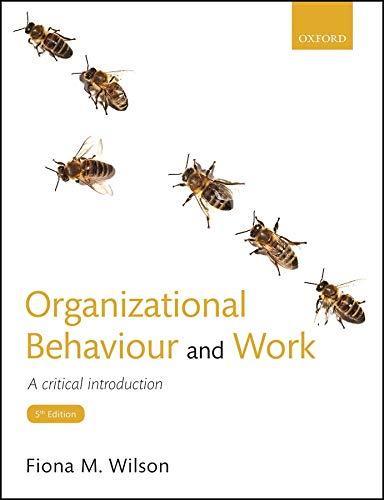Churches, like other organizations, make choices about how they organize and structure themselves. The Church of Scotland
Question:
Churches, like other organizations, make choices about how they organize and structure themselves.
The Church of Scotland has a relatively flat organizational structure and no hierarchy. It is one of the largest organizations in Scotland, with over 350,000 members and 800 ministers, supported by more than 1,500 professional and administrative support staff. The support staff deliver the services at national and international level for the Church—that is, the day-to-day policymaking and practical decision making; they are organized into six main councils (for example, the Social Care Council offers services and specialist resources to people in need), a number of associated committees (for example, the Legal Questions Committee advises on questions of Church and constitutional law), and departments (for example, the human resources department).
The governing system is Presbyterian, which means that authority is shared and no single person or group has more influence or say than any other. The Church does not have one person who acts as head of the faith; rather, it is governed at three levels:
● At local parish level by a kirk session (elders presided over by a minister);
● At district level by a presbytery (all of the ministers in the district, an equal number of elders, and other ordained members, including those working in industry or prisons);
● At national level by the General Assembly, which consists of around 400 ministers, 400 elders, and other ordained members.
The General Assembly is the supreme court of the Church of Scotland, and has the authority to make laws determining how the Church of Scotland operates and to establish the priorities for the coming year. The General Assembly meets once a year and is chaired by the Moderator, whose role is honorary and held for 12 months. The Moderator is not the head or leader of the Church, nor its spokesperson; if asked for an opinion on an important issue, the Moderator is expected to have in mind the views of the General Assembly or relevant Church board or committee. A committee of the Assembly nominates the Moderator.
Unlike the Church of England, the Church of Scotland does not need to take orders from Parliament;
the Church was given freedom from interference in spiritual matters in 1921. The Church of Scotland does keep in close touch with parliamentarians and contributes to the discussion on the issues of the day. The reigning monarch is not seen as the head, although she is given a special place in that she attends, or is represented, in each General Assembly. She is not, however, able to influence debates.
In contrast, the Church of England has at its head the Archbishop of Canterbury as its most senior cleric, while the British monarch is the Supreme Governor of the Church of England. There is a direct link between Church and State. There is also a hierarchy of archbishops, bishops, and dioceses. The Church is divided into two provinces, each headed by archbishops, who are the most senior clergy in the Church. The Archbishop of Canterbury is head in the south of England and is the ‘first among equals’ of the bishops—that is, he is the spiritual leader. The Archbishop of York is head of the north of England, with pastoral oversight of the bishops in that province and responsibility for clergy discipline.
Each of the two provinces contains a number of dioceses—that is, defined administrative areas presided over by a bishop, who has exclusive jurisdiction within it. The 43 dioceses in England are further divided into archdeaconries run by archdeacons, deaneries, and parishes. An archdeaconry, headed by an archdeacon appointed by the bishop, may include the whole of a diocese, but is usually smaller. A deanery, presided over by a dean, is a collection of parishes within an archdeaconry. The smallest administrative unit is the parish. A parish priest, usually called a ‘vicar’ or ‘rector’, oversees each parish; a parochial church council will collaborate with the priest in the everyday running of the parish church. The majority of the Church’s 20,440 clergy are involved in parish ministry. The two archbishops and 24 bishops sit in the House of Lords. The Church of England is described as being ‘episcopally’ led by the 108 bishops, and the General Synod decides its practices.
The General Synod is the central governing and legislative body that meets as a national assembly of the Church of England. It can, for example, legislate to pass measures that, if approved by resolution of each House of Parliament and granted royal assent, become part of the law of England.
The General Synod has three houses: one for the diocesan bishops; one for the elected representatives of the clergy; and the other for the laity of the Church.
A system of discipline is necessary for any organization. In the 1990s, the Church of England acknowledged the need to review its governmental and disciplinary procedures (General Synod, 1996; 1997).
Questions
1. What are the advantages and disadvantages of the different organizational structures for:
(a) The laity?
(b) The management?
2. Which structure do you prefer and why?
Step by Step Answer:

Organizational Behaviour And Work A Critical Introduction
ISBN: 9780198777137
5th Edition
Authors: Fiona M. Wilson





